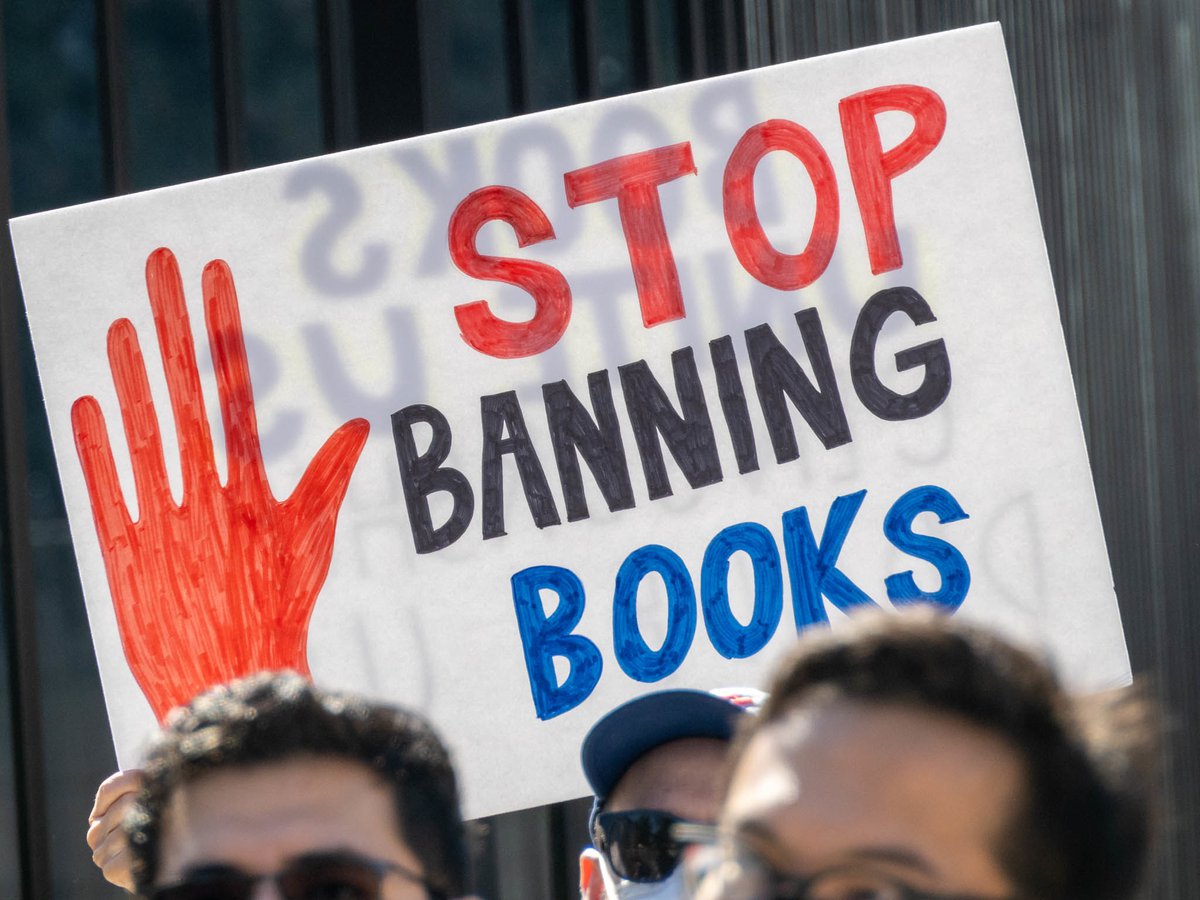

Across the United States, book ban campaigns have been one of the most prominent facets of the culture wars launched by rightwing figures and their funders. Book banners have challenged books long seen as educational staples along with new texts featuring topics they would rather students not know about.
“Looking ahead to 2025, I feel more hopeful and energized than ever,” writes Tina Descovich, executive director of the conservative nonprofit Moms for Liberty in their 2024 annual report. “We’re just getting started. This year was a stepping stone to even greater victories. Together we will grow our chapters, win back school boards, and fight to protect the innocence of children.”
Descovich can’t be faulted for her optimism. Moms for Liberty has been at the forefront of book banning efforts in public libraries and the libraries of public schools, and the book banners have had a wave of recent success.
In 2023, the American Library Association reported that 4,240 books were targeted for censorship, a 92 percent increase from the previous year. Donald Trump won the presidency in November on an education platform that includes dismantling the Department of Education, as well as “ending wokeness” in the classroom by cutting funding for schools that teach lessons on topics such as racism and gender identity.
Despite the gains of the book banning movement, polls indicate that the public isn’t on board: A 2022 poll by the American Library Association found that 71 percent of the general public opposes efforts to remove books from public libraries. By party, 75 percent of Democrats, 70 percent of Republicans, and 58 percent of independents oppose book removals. And there are signs that backlash against book bans and censorship is building, especially in blue states.
In December, New Jersey passed the Freedom to Read Act, which prohibits both public libraries and school libraries from excluding books because of the origin, background, or views of the material or its authors. The new law also establishes protections for librarians against criminal and civil complaints for complying with this law. In addition, New Jersey’s law requires local school boards and governing bodies of public libraries to establish policies for the curation and removal of library materials, including a system of review to address concerns over library materials.
Amol Sinha, executive director of the New Jersey American Civil Liberties Union, stresses the new law was not a ban on book bans, per se, but it did establish a uniform process on how books would be reviewed.
“For instance, [under the new law] books can’t be removed for viewpoint or ideology or because of the identities of the characters or the authors,” he says. “If community members wanted to petition for a book to be removed from a collection, there would be a process on how that could happen.”
With this new law, New Jersey has joined the ranks of Minnesota and Illinois in tightening up the standards for banning books. Michigan and Oregon are currently considering similar legislation. These measures to protect access to books are part of a nationwide trend that is likely to become more widespread once Donald Trump takes office, says Sinha.
“With Trump, I think what we will see is the efforts to ban books become more enabled and empowered and at the same time, the efforts to combat book banning will be empowered as well,” Sinha tells The Progressive.
Opponents of book bans feel that there is much at stake. A report released in 2024 by PEN America, a nonprofit that works to raise awareness around free press and free expression issues, noted in a recent report that book bans and educational gag orders have spread to public colleges and universities.
“[Book bans] limit access to diverse ideas [and] restrict students’ access to a variety of views and stories,” Kasey Meehan, program director of PEN America’s Freedom to Read project, tells The Progressive.
Meehan also notes that book bans make it harder for people to read and publish freely, and make it more difficult for professional writers to earn a living.
While organizations like Moms for Liberty have justified the censorship of books along the lines of protecting underage children from inappropriate sexual content, progressive groups opposing the removal of certain books see ulterior motives. These groups view book bans as a lever to diminish the power of marginalized groups while promoting a narrow point of view.
“There have also been past efforts to ban texts with outdated racialized tropes, but those efforts have been overshadowed by much larger attacks on materials that talk about race [and] racism, [and] include characters of color,” Meehan says.
A recent PEN America survey of censored books by PEN America found that 41 percent of the targeted books explicitly address LGBTQ+ themes, and 21 percent directly address issues of race and racism. According to the survey, 40 percent of the books contain protagonists or prominent secondary characters of color. Twenty-two percent contain content relating to sex or reproduction, including pregnancy, sexual assault, and abortion.
“These bans are actually about diminishing the humanity and the civic relevance of marginalized people,” Sinha says.
Removing books from shelves isn’t the only form of censorship book banners have engaged in. The deletion of certain book sections, commonly known as redaction, along with the restriction of who can access books and the relocation of books from one section of the library to another, are other, more subtle forms of censorship.
Currently, New Jersey’s legislation addresses the removal of books from library shelves, but does not address redaction, restriction, or relocation. This means censorship can still happen. Sinha says the new law was never meant to completely prevent all book bans, and that, while there’s more work to do, this legislation is a good start.
“It is not designed to be a silver bullet to stop censorship altogether,” Sinha says. “This bill lays out the floor and not the ceiling of what is possible.”
Both Meehan and Sinha highlight the importance of forming broad coalitions when trying to fight book banks. New Jersey’s law, for example, came to fruition with bipartisan backing and support from the state library association, school library associations, advocacy organizations like PEN America and EveryLibrary, the American Library Association, parent and student groups, and authors.
While it may be harder for residents living in states with a government firmly under Republican control to obtain bipartisan support for progressive legislation, there are still ways to fight book banning.
“If state legislation is too onerous, groups can pass protective policy for their school district or public library system,” Meehan says, noting that local organizations can help to pass policies that narrow the scope of what books could be considered for book banning. Groups like PEN American and Everyday Advocacy have developed resources to help teachers and librarians protect the freedom to read.
According to the nonprofit group Unite Against Book Bans, most of the book ban battles are fought locally at library board, school board, and city council meetings.
Freedom to Read Project chapters of grassroots citizens concerned about censorship have been established in Florida and Texas. Both chapters have organized residents to attend local library and school board meetings to fight censorship. Most recently, the Texas chapter has lobbied local school boards to block the banning of Slaughterhouse Five and The Diary of Anne Frank.
Sinha takes some comfort in past struggles. “There’s never been a time in our history when less information is better than more information,” he says. “Throughout our history, book bans have come and gone and, for the most part, failed.”






